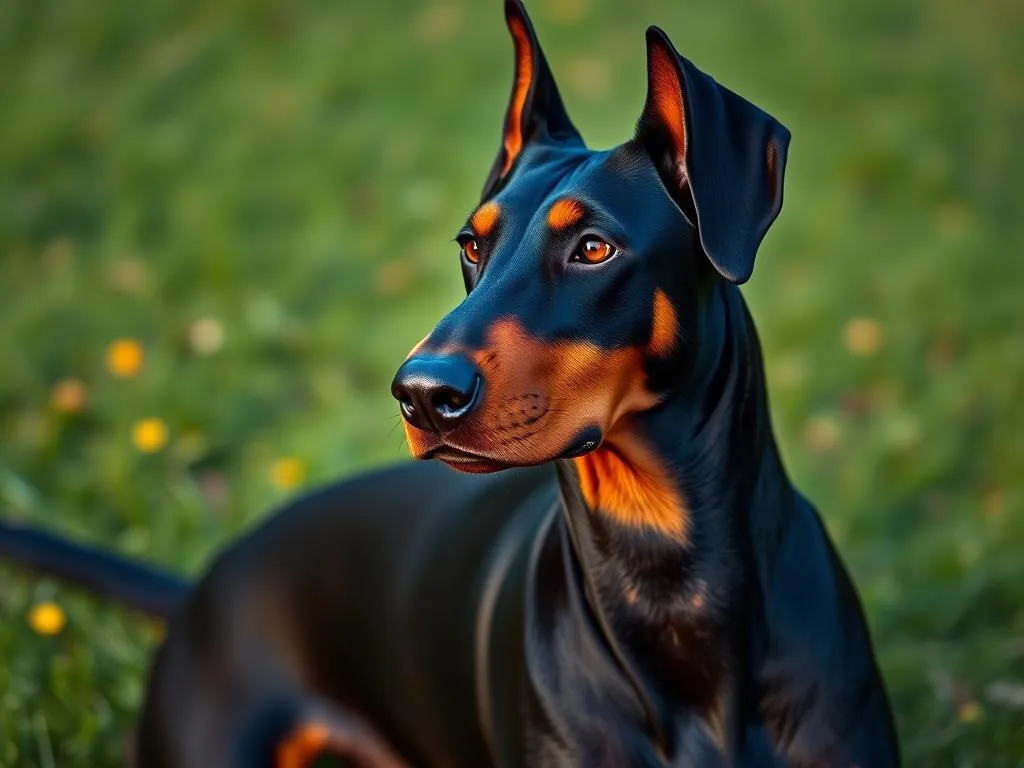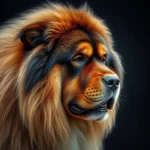
Introduction
The Doberman Pinscher is a breed that has captured the hearts of many dog lovers around the world. Known for their sleek appearance, intelligence, and loyalty, these dogs are more than just beautiful companions; they are also highly capable working dogs. Understanding the unique traits of this breed is crucial for anyone considering bringing one into their home. This article aims to provide valuable insights and Doberman Pinscher facts that will help you appreciate this remarkable breed and make informed decisions about ownership.
History of the Doberman Pinscher
Origins
The origins of the Doberman Pinscher can be traced back to Germany in the late 19th century. The breed was developed by a tax collector named Karl Friedrich Louis Dobermann. His work often brought him into contact with dangerous individuals, and he sought to create a dog that would serve as both a companion and a protector. Dobermann’s efforts resulted in a breed that is not only loyal and protective but also highly intelligent and trainable.
Evolution of the Breed
Initially, Doberman Pinschers were bred for various roles, including guarding property, police work, and search and rescue operations. Their versatility made them popular among law enforcement agencies. Over the years, breeding practices have evolved, focusing on temperament and physical traits to meet the needs of families and various working roles. Despite these changes, the breed retains its strong instincts and capabilities.
Physical Characteristics
Size and Build
Doberman Pinschers are medium to large-sized dogs, with males typically standing between 26 to 28 inches tall and weighing between 75 to 100 pounds, while females usually stand 24 to 26 inches tall and weigh 60 to 90 pounds. They possess a muscular and athletic build, characterized by a deep chest and powerful legs. Their distinctive features include their erect ears (often cropped) and a long, tapering muzzle.
Coat and Color
The coat of a Doberman Pinscher is short, dense, and smooth. Common color variations include black with rust markings, blue, and fawn. Some Dobermans also exhibit a solid red color. Grooming is relatively easy; regular brushing can help minimize shedding and keep their coat healthy. Bathing should be done only as needed to avoid stripping the coat of its natural oils.
Temperament and Behavior
General Personality Traits
One of the most celebrated Doberman Pinscher facts is their temperament. These dogs are known for their intelligence, loyalty, and protective nature. They form strong bonds with their families and are often wary of strangers, making them excellent watchdogs. Their energy and enthusiasm can be a source of joy, but it also requires responsible ownership.
Socialization Needs
Early socialization is crucial for Doberman Pinschers to help them develop a well-rounded personality. Exposing them to various environments, people, and other pets from a young age can prevent behavioral issues later on. With proper socialization, Dobermans can be great companions for children and other pets, provided they are introduced carefully and supervised.
Training Considerations
Training a Doberman Pinscher can be a rewarding experience due to their intelligence and eagerness to please. Positive reinforcement methods, such as treats and praise, work best with this breed. Consistency and patience are essential, as Dobermans can sometimes exhibit stubbornness. Common behavioral issues include excessive barking and separation anxiety, which can often be mitigated through training and ample exercise.
Health and Lifespan
Common Health Issues
Like all breeds, Doberman Pinschers are prone to certain health issues. Some common genetic predispositions include dilated cardiomyopathy (a heart condition) and hip dysplasia (an abnormality of the hip joint). Regular veterinary check-ups and preventive care can help identify and manage these issues early. Responsible breeding practices can also reduce the likelihood of genetic problems.
Lifespan Expectations
The average lifespan of a Doberman Pinscher ranges from 10 to 13 years. Various factors can influence their longevity, including genetics, diet, exercise, and overall health care. Proper nutrition and regular veterinary visits play a significant role in ensuring a long and healthy life for your Doberman.
Exercise and Diet
Exercise Requirements
Doberman Pinschers are high-energy dogs that require substantial daily exercise to keep them physically and mentally stimulated. It is recommended that they receive at least 60 to 90 minutes of exercise each day. Activities such as running, hiking, and agility training are excellent ways to keep your Doberman engaged and healthy. Regular exercise not only maintains their physical health but also helps prevent behavioral issues stemming from boredom.
Nutritional Needs
A balanced diet is crucial for the health of your Doberman Pinscher. High-quality dog food that meets their nutritional needs is essential. Depending on their age, weight, and activity level, their diet may require adjustments. Portion control is important to prevent obesity, which can contribute to health problems. Consulting with your veterinarian can help you establish the best feeding regimen for your Doberman.
Doberman Pinschers as Family Pets
Pros and Cons
Owning a Doberman Pinscher comes with both benefits and challenges. On the plus side, they are loyal, intelligent, and protective, making them excellent companions and watchdogs. They are also known for their playful demeanor and can be very affectionate with their families. However, potential challenges include their need for regular exercise, socialization, and training. First-time dog owners may find their strong-willed nature demanding.
Best Environment for Dobermans
Doberman Pinschers thrive in environments where they have ample space to roam and play. While they can adapt to apartment living, they do best in homes with a yard where they can run freely. This breed requires companionship and mental stimulation, so they should not be left alone for long periods. Engaging them in activities and providing them with a structured routine will ensure their happiness.
Doberman Pinschers in Popular Culture
Representation in Media
Doberman Pinschers have made notable appearances in films and television, often portraying roles as loyal companions or fierce protectors. Their striking appearance and reputation for intelligence have contributed to their popularity in media. However, these portrayals can sometimes reinforce negative stereotypes about the breed.
Public Perception
The public perception of Doberman Pinschers can be mixed. While many admire their beauty and capabilities, others may view them as aggressive or dangerous due to their protective nature. Understanding the breed’s true temperament and educating others about responsible ownership can help dispel these misconceptions.
Conclusion
In summary, Doberman Pinscher facts reveal a breed that is both captivating and complex. From their rich history to their physical characteristics and temperament, they are a breed that requires careful consideration before bringing one into your home. Responsible ownership, including proper training, socialization, and health care, is essential for enjoying a fulfilling relationship with these remarkable dogs. If you’re considering a Doberman Pinscher, take the time to understand their needs and traits to ensure a happy and harmonious life together.
FAQ Section
What is the average cost of a Doberman Pinscher?
The average cost of a Doberman Pinscher can range from $1,500 to $3,000, depending on factors like lineage, breeder reputation, and location.
Are Doberman Pinschers good with children?
Yes, Doberman Pinschers can be excellent with children when properly socialized and trained. They are known for their loyalty and protective instincts.
How much space do Dobermans need?
Doberman Pinschers benefit from having ample space to exercise. They can adapt to apartment living if given sufficient daily exercise and mental stimulation.
What is the best training method for Dobermans?
Positive reinforcement is the most effective training method for Doberman Pinschers. Using treats and praise encourages good behavior and strengthens the bond between the dog and owner.









